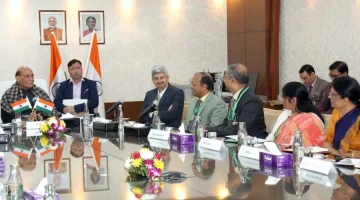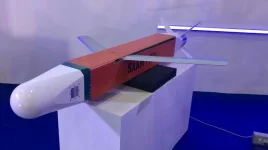- Views: 2K
- Replies: 3
A retired senior officer of the Pakistan Air Force (PAF) has asserted that Pakistan is on track to achieve air power superiority over the Indian Air Force (IAF) for the next decade to decade-and-a-half.
Writing in The Express Tribune on April 7, 2025, Air Commodore (Retd) Zahid Ul Hassan stated that the PAF's focus on integrating advanced 5th generation aircraft contrasts sharply with the IAF's ongoing struggle between developing indigenous technology and purchasing aircraft from foreign suppliers.
This evolving situation, according to Hassan's analysis, combined with Pakistan's strategy of co-producing and acquiring 5th generation jets featuring long-range weapons and 'first-shot' engagement capabilities, could present considerable difficulties for India's air defence.
The challenge is potentially amplified by China's parallel development of next-generation, 6th generation aircraft technology for its own air force, the People's Liberation Army Air Force (PLAAF).
The PAF has been actively upgrading its aerial fleet, placing significant importance on acquiring 5th generation stealth fighters. In January 2024, PAF Chief Air Chief Marshal Zaheer Ahmed Baber Sidhu confirmed steps were underway to procure the Chinese Shenyang FC-31 aircraft, often referred to as the J-31 or J-35. This aircraft is a multirole stealth fighter designed by China.
Reports suggest Pakistan finalized a deal for approximately 40 FC-31 units, potentially arriving within the next couple of years. The FC-31 aims to rival platforms like the American F-35, incorporating advanced stealth, modern flight systems, and the capacity for long-range missiles like the PL-15, reported to have a reach of about 150 km.
Air Commodore Hassan highlighted that acquiring these 5th generation jets, alongside advanced long-range weapons allowing for engagement before being detected ('first-shot capability'), positions the PAF for a tactical upper hand. This capability is crucial in modern air combat, where avoiding detection and striking first are key advantages.
Furthermore, the PAF already operates the advanced JF-17 Thunder Block III aircraft, developed jointly with China, which includes modern AESA radar systems and long-range missile capabilities, contributing to its overall combat readiness.
Conversely, the Indian Air Force finds itself at a crossroads regarding its fleet modernization, a point underscored by Hassan. The IAF faces a persistent dilemma: prioritize self-sufficiency through homegrown projects like the Tejas Light Combat Aircraft (LCA) and the under-development Advanced Medium Combat Aircraft (AMCA), or quickly fill capability gaps by buying aircraft directly from other countries. This choice has become more complex due to delays affecting indigenous programs and a sometimes slow procurement process for foreign jets.
Hassan's assessment echoes concerns reportedly voiced by IAF Chief Air Chief Marshal Amar Preet Singh at the India Today Conclave 2025 on January 23, 2025. Air Chief Marshal Singh acknowledged the IAF's challenges, including a growing qualitative difference compared to regional air forces like the PAF and PLAAF. He also mentioned the difficulties in managing a diverse fleet that includes older Soviet-era planes alongside modern aircraft like the French Rafale, which, while highly capable, is considered a 4.5 generation fighter, potentially lacking some advanced features of true 5th generation jets.
The introduction of 5th generation aircraft into the PAF inventory represents a significant strategic challenge for the IAF. This is especially relevant given the sensitive security situations along the Line of Control (LoC) with Pakistan and the Line of Actual Control (LAC) with China.
The FC-31's stealth design and long-range strike potential could allow the PAF greater freedom to operate in contested areas, potentially altering the regional air power balance. This is particularly noteworthy as the PAF's planning historically centres on potential conflict with India, whereas the IAF must prepare for contingencies involving both Pakistan and China simultaneously.
Adding to the complexity, Hassan pointed to China's progress in developing 6th generation fighter technology. While direct export of such cutting-edge systems to Pakistan seems unlikely soon, technological advancements within the PLAAF could indirectly benefit the PAF over time, potentially further increasing the capability difference with the IAF. Sixth-generation concepts often include features like directed energy weapons, advanced artificial intelligence, and hypersonic flight.
Recent IAF acquisitions, including the Russian S-400 air defence missile system and the French Rafale fighters, aim to enhance India's capabilities. However, Hassan views these as partial measures insufficient to counter the challenge posed by 5th generation stealth aircraft like the FC-31. He suggests that even advanced systems like the S-400 could face difficulties effectively targeting stealth platforms in complex combat scenarios, while the Rafale, despite its strengths, remains a generation behind true 5th generation fighters.
In conclusion, Air Commodore Hassan's projection of a 10-15 year qualitative advantage for the PAF serves as a significant warning regarding the modernization challenges confronting the IAF. Although the IAF operates a larger fleet numerically (around 2,229 aircraft compared to the PAF's estimated 1,399), the age of many of its aircraft and delays in upgrades could impact its ability to ensure air superiority.
The IAF leadership, under Air Chief Marshal Singh, faces the critical task of devising a clear strategy that addresses immediate operational requirements while pursuing long-term goals of indigenous development and self-reliance in defence.


